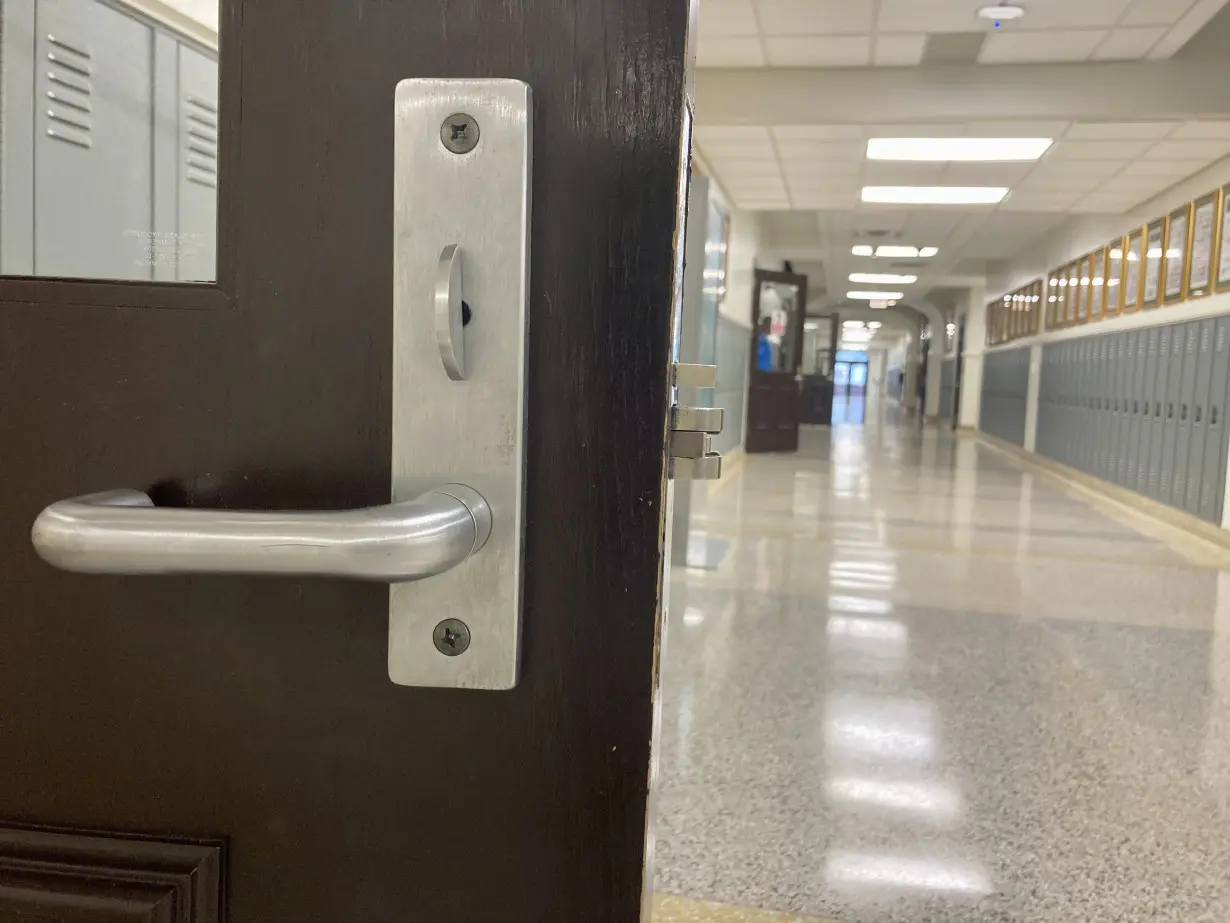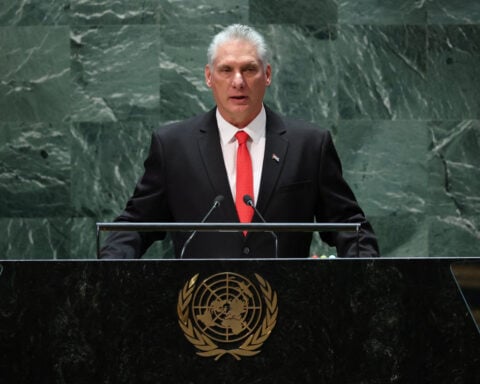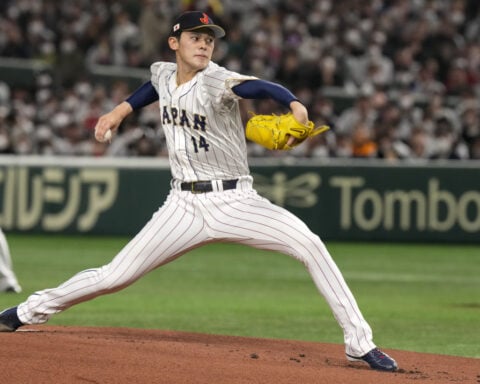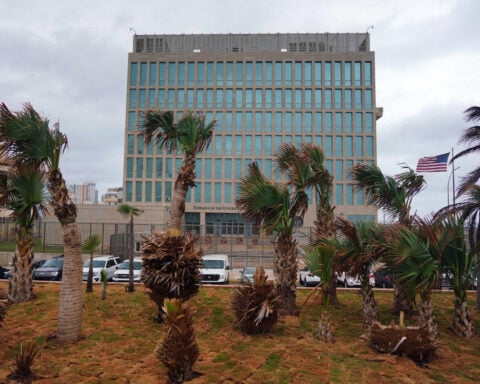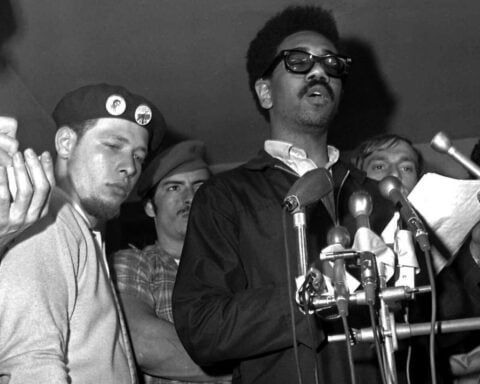WASHINGTON (AP) — America’s Black and Latino students are at a disadvantage in nearly every measure of educational opportunity, with less access to advanced classes, counselors and even certified teachers, according to data released Wednesday by the U.S. Education Department.
The findings reflect inequities that have lasting implications for students' ability to learn effectively, go on to college and earn degrees.
“We view education as the springboard that puts the American dream within reach. Yet access to educational opportunity in this country remains unequal,” Education Secretary Miguel Cardona said.
The data was released as part of the Civil Rights Data Collection, a federal survey of nearly every public school in the nation. It was gathered during the 2020-2021 school year, when many schools remained at least partially closed for the COVID-19 pandemic.
America's education system has long had deep educational disparities. Nearly seven decades after the Supreme Court ordered schools to desegregate, the new data offers a glimpse of basic differences that endure in schools serving predominantly Black and Latino students.
For example, a growing body of evidence has tied instruction from certified teachers to better outcomes from students. Yet Black and Latino students are more likely to attend schools with lower percentages of certified teachers, according to the new data.
About 522,000 students, or about 1% of all students, went to schools where fewer than half the teachers met all state certification requirements. In those schools, 66% of students were Black or Latino.
There was a similar divide when it came to school counselors. Overall, 77% of public schools had at least one counselor, and 43% had at least one police officer or security guard.
But compared with their white peers, students of color were more likely to be in schools that had security staff but no counselor. Black students and those of more than one race were 1.2 times more likely to attend those schools, while the rate was 1.4 for Native Hawaiian and other Pacific Islanders, American Indians and Alaska Native students, the Education Department found.
Cardona called it an “appalling” disparity in light of rising rates of mental health challenges for young people.
Barriers extended to students' access to higher level classes. Taking advanced classes improves a student’s chances of going to college, studies find. But Black and Latino students were far less likely have access to or enroll in those classes.
Black students represented 15% of all high school students, but they made up just 8% of students in Advanced Placement science and 6% in AP math. Latino students represented 27% of all high school students but made up 20% in AP science and 19% in AP math.
White and Asian students, by contrast, were overrepresented in AP classes.
The percentage of Black and Latino students in AP math and science is mostly unchanged from 2017-18, the last school year covered by the survey, with a slight increase in Latino enrollment in both tests.
“I’m a person of color, and it often makes me wonder why people of color always get the bottom of the barrel,” said Sonya Thomas, executive director of Nashville PROPEL, an organization that works with parents to advocate for students of color. “It’s so disheartening. Our children deserve the very best and we need to hold the state and federal government accountable.”
Advocates have been pointing out inequity in advanced course offerings for years. Research has shown that low-income students and students of color are less likely to take advanced math and science courses, even in schools where AP courses are offered.
“These new CRDC data reflect troubling differences in students’ experiences in our nation’s schools,” said Assistant Secretary for Civil Rights Catherine E. Lhamon. “We remain committed to working with school communities to ensure the full civil rights protections that federal law demands.”
At many schools with larger rates of minority students, taking advanced courses wasn’t even an option. The number of courses in math, science and computer science was fewer at the 5,500 public high schools where Black and Latino students represented more than 75% of all students.
In 35% of schools with high Black and Latino enrollment, calculus wasn’t offered, while it was available at 54% of schools with low Black and Latino enrollment.
The Education Department found that students with disabilities and those learning English also faced unequal access. Students in both groups had lower enrollment in math and science classes compared with enrollment among all students, for example.
During the 2020-2021 school year, 26% of all high schoolers took biology, a common class for ninth graders. But just 13% of high schoolers with a disability took the class, and only 7% of students learning English.
The Civil Rights Data Collection is seen as an important gauge of equality in public schools. Started in the 1960s, it can offer a long view on efforts to close gaps.
Data on some topics was skewed in a year upended by the pandemic, which kept many students away from the classroom for long stretches. Arrests in schools, for example, fell from 54,000 in 2017-18 to just 8,900 in the 2021-21 year.
Of the 97,000 schools included in the survey, 88% were offering a hybrid of in-person and virtual classes in the 2020-21 school year, with 5% offering virtual classes only. About 7% were entirely in-person.
___
The Associated Press education team receives support from the Carnegie Corporation of New York. The AP is solely responsible for all content. ___ Associated Press writer Sharon Lurye in New Orleans contributed to this report.

 Germany's economy shrank for the second consecutive year in 2024
Germany's economy shrank for the second consecutive year in 2024
 Italy, Albania, UAE sign deal for energy subsea interconnection
Italy, Albania, UAE sign deal for energy subsea interconnection
 European shares advance as bond yields ease; soft inflation powers UK stocks
European shares advance as bond yields ease; soft inflation powers UK stocks
 Bayern Munich signs US youngster Bajung Darboe from LAFC
Bayern Munich signs US youngster Bajung Darboe from LAFC
 Novak Djokovic breaks a tie with Roger Federer for the most Grand Slam matches in tennis history
Novak Djokovic breaks a tie with Roger Federer for the most Grand Slam matches in tennis history
 China's RedNote: what you need to know about the app TikTok users are flocking to
China's RedNote: what you need to know about the app TikTok users are flocking to
